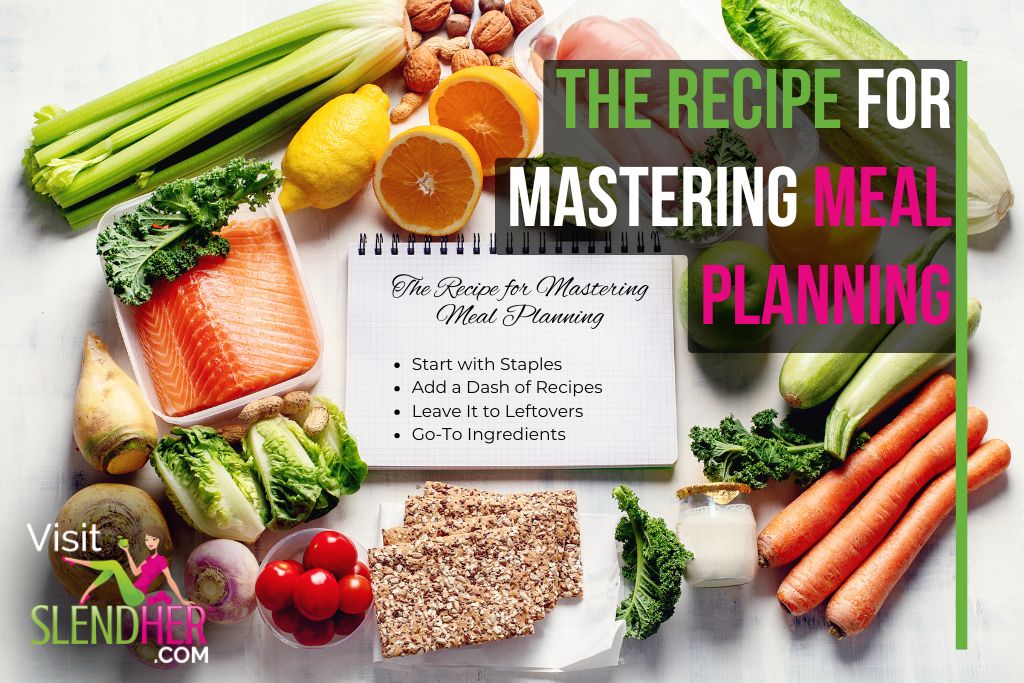
If your resolutions for eating right are starting to go all wrong, meal planning could be the solution toward slimming your dress size. Sure, exercise helps, but often times it comes down to what you put into your body. You need to eat healthy, whole foods in proper portions, with the goal of working smarter not harder.

While establishing a meal plan can help your figure, there are benefits for your budget and busy schedule, too. Knowing what you will eat each day, including snacks, allows you to make a precise list of everything you’ll need. Instead of buying all kinds of fruits and vegetables to respond to your changing appetite and moods, you’ll buy only specific kinds, eliminating extra expense on items that typically end up in the trash. That’s equates to saved money as well. Plan the food that you want to take in and don’t buy more than you need. Stick to those tips, and overeating becomes harder to do without another trip to the store.
Despite the advantages of planning a week’s worth of eats, many people don’t do it because it can feel overwhelming. But with tips provided below, you can master the task in no time.
Start with Staples: You probably already have a selection of go-to meals that are entree staples: tacos, spaghetti, soup and sandwiches, etc. Start with these. Make a list of all of them, then pick three or four to add to your meal plan. Already you have about half a week of dinners planned. If these meals aren’t healthy, look for ways to clean them up. For example, instead of making spaghetti with ground beef meat sauce over high carb noodles, opt for a leaner turkey for your protein and swap in zucchini peeled in fine strips for a pasta replacement.
Add a Dash of Recipes: Be inspired by food featured on Pinterest, look for recipes in magazines, and sent a shout out over social media requesting tried and true recipes from loved ones. You’ll probably come up with a lot of results, so stash them away to use throughout the month. Before you do, pick three or four that you just have to try now and add them to your list. Try to select simple recipes that fit your skill and schedule. One or two that are more complicated may work for weekends. Dinners are now done.
Leave It to Leftovers: The dinners you have will likely yield plenty of leftovers. Make use of these as next-day lunches, or for use in recipes later in the week. Intentionally make more of food that can be re-purposed. For example, if you’re cooking chicken breasts, make a few extra to cut up and add to lunch time salads. Cut and store these before sitting down to dinner to make sure they don’t get eaten as seconds.
Go-To Ingredients: Even though you’re planning meals in advance, you can still have some variety. To switch up sandwiches, salads, and even breakfast omelets, try these foods to open up your options:
- hard cheeses
- deli meats
- pre-cut veggies
- lettuce mixes
- salad dressing
- seeds and nuts
Once you have most of your meals planned, go through the recipes to create a grocery list specific to the week ahead. Fill in staple breakfasts and healthy snacks, but don’t make it the same thing every day–that’s a definite plan for burning out.
Want more tricks for making eating right easier?
Keep a look out for our guide, Eating for Fat Loss: The Diet Free Way to Lose Weight!
This guide (exclusively available to SlendHer Newsletter subscribers) approaches how to use whole foods to achieve and maintain the body you want.
No miracle diets, pills, or calorie counting here – it’s about understanding your body’s response to different foods, and how small changes can make a big impact on your body. You’ll also discover what you can eat instead of the constant focus on what you can’t! Stay tuned for the release date!


Leave a Reply